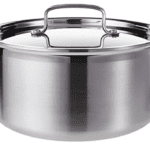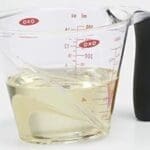Last updated on July 5th, 2024 at 12:25 am
Boiling corn on the cob is a classic and straightforward method that yields tender and juicy kernels. It’s a versatile dish that can be enjoyed on its own as a snack or as a delightful accompaniment to grilled meats, salads, or other summery dishes. So, gather your fresh corn and get ready to savor the flavors of this quintessential summer treat.
Learn how to make boiled corn on the cob. There is nothing like fresh, sweet corn with lots of butter and sprinkled by salt. Hard to have just a few.
Corn on the cob is a popular summertime treat that brings back memories of barbecues, picnics, and outdoor gatherings. This delightful vegetable, with its sweet and juicy kernels, can be enjoyed in various ways, including slathered with butter for an extra burst of flavor.
*Post contains affiliate links* for more information please read the disclaimer on the About Us page.
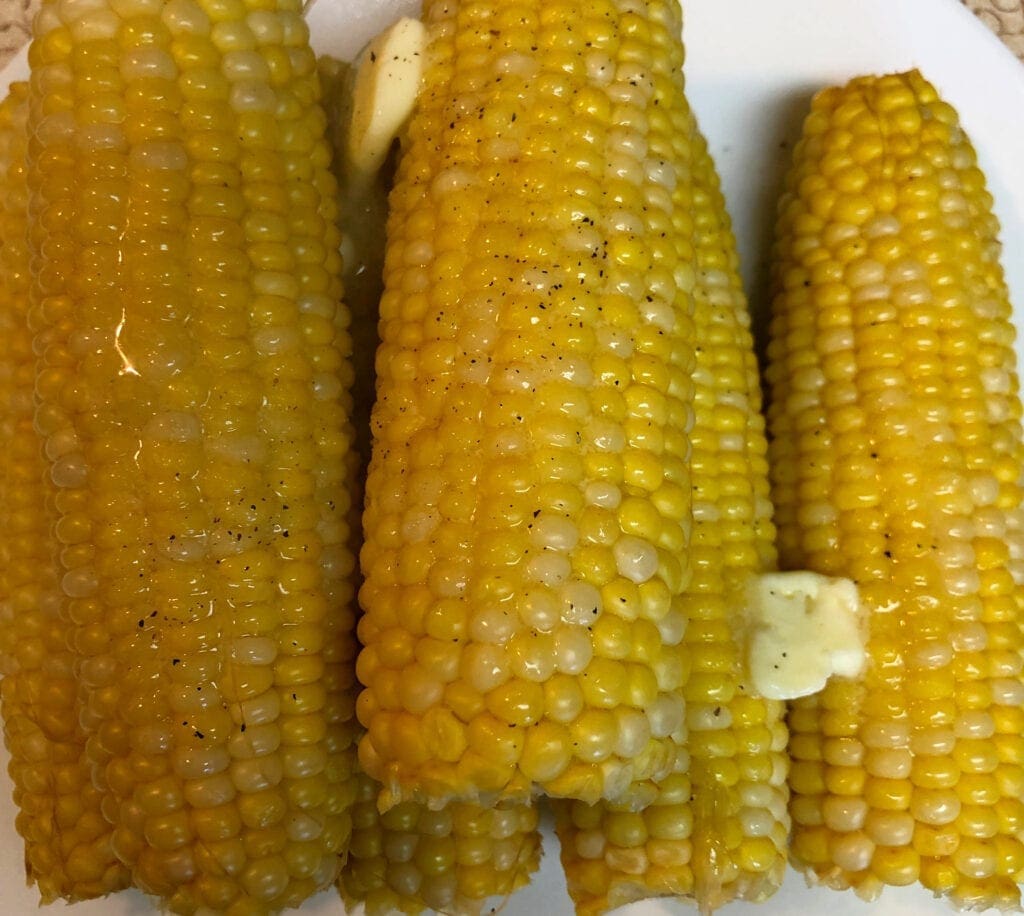
Simple Ingredients and Easy Recipe
Simple recipe with just sugar and salt (both optional), water, and of course, corn. I have tried a few other recipes with other ingredients; however, our family still loves this one best.
This has been the family recipe for decades. We enjoy the sweet kernels with butter, salt, and some like pepper too.
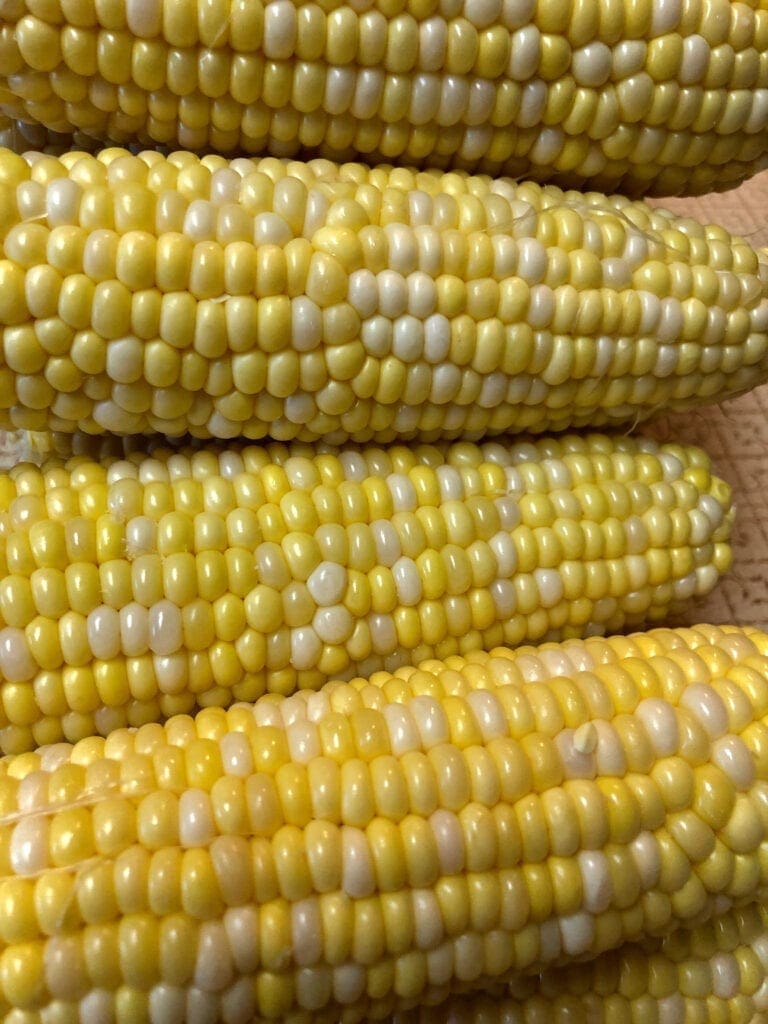
How to Choose Ears of Sweet Corn
Whether you purchase your ears of corn at a farmers market or grocery store. Or, maybe you are lucky enough to have it out in your garden. Pull back a little of the husk near the silk and check to see that the corn kernels are ripe and plump looking.
What you don’t want to see is mold or dented kernels. Sometimes, there is a blemish or two on the cob, that is okay, just cut it off.
I generally check each ear of corn that I stuff into a bag.
Other Things to Look for in Fresh Corn
- Make sure the tassels look brown and sticky, this means that the corn is fresh.
- When peeling back the husk, you just need to peel enough to get a peek at the corn kernels.
- The silk should be light and yellow, if it is dark the corn is not fresh.
- The husk should look fresh and green, not dry and yellowish.
If you would prefer not to husk the corn or check the corn, groceries now have packets of corn on the cob already husked. It really is very convenience.
I have purchase these in the past and it is a time saver on a weeknight. All I have to do is the boiling and eating.
Carbs in Corn on the Cob with Butter
If you’re watching your carbohydrate intake or following a specific diet plan, you may be curious about the carb content of corn on the cob when paired with butter.
When it comes to corn on the cob, the majority of its carbohydrate content comes from its naturally occurring sugars. On average, a medium-sized ear of corn contains approximately 19 grams of carbohydrates.
However, it’s worth noting that this figure may vary slightly depending on the size and variety of the corn. The addition of butter, a classic and indulgent topping, introduces a small amount of carbohydrates as well. Roughly one tablespoon of butter adds about 0.1 grams of carbs to your corn on the cob.
While corn does contain carbohydrates, it also offers a range of other essential nutrients. It is a good source of dietary fiber, providing around 2 grams per ear.
Additionally, corn is rich in vitamins A and C, as well as minerals like potassium and magnesium. So, with its balance of carbohydrates and beneficial nutrients, corn on the cob can be enjoyed as part of a well-rounded diet.
Now that we’ve discussed the carb content of corn on the cob with butter, let’s dive into some tips for making this delicious summertime treat right in the comfort of your own home.
Preparing the Corn on the Cob
Making corn on the cob is a simple yet rewarding process that allows you to enjoy the natural flavors and textures of this beloved vegetable.
By following a few key steps, you’ll be able to serve up perfectly cooked corn on the cob that will impress your family and friends at any gathering.
Just before cooking, husk the corn, pull off the silky threads, and cut out any blemishes with a pointed knife.
I generally boil the corn cob whole; however, you may want to cut it is half or in quarters before boiling.
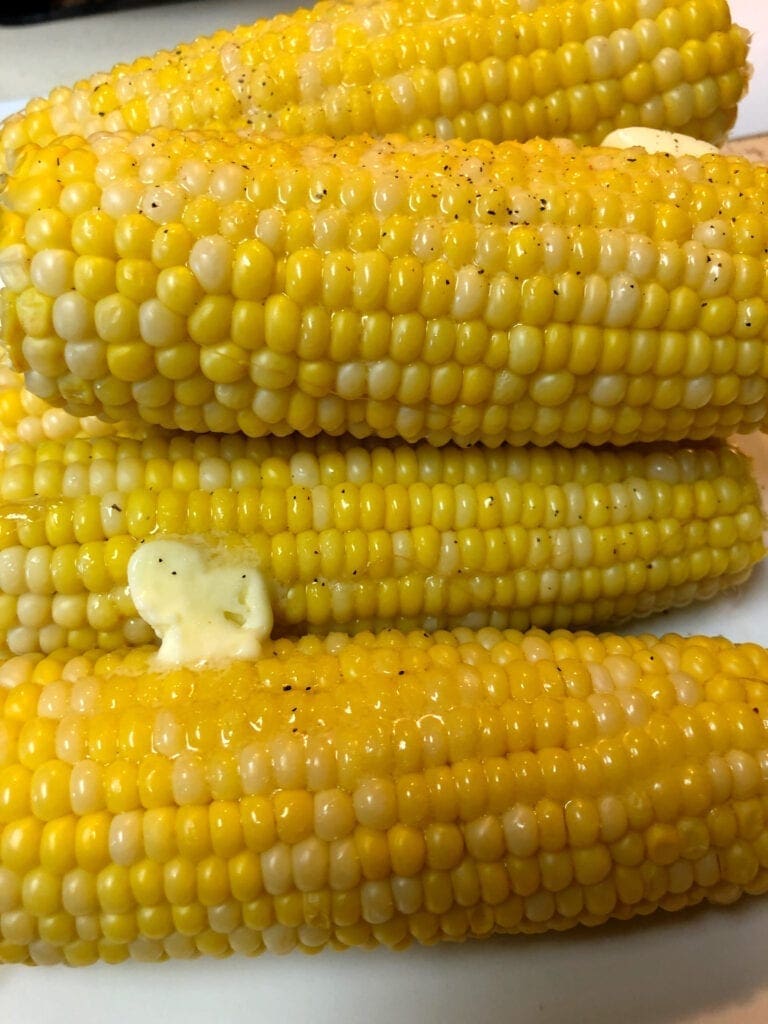
Boiling the Perfect Corn
Use a large kettle to fit at least 4-5 ears of corn. However, that is not saying you can’t make more than that at a time.
The other day, I made 15 ears of corn. I filled the kettle, and let some ears of corn steam while the others cooked in the water. When the corn was done in the water, I took them out. Then added more corn to steam before it gets cooked in the water. It is like an assembly line.
Simple and Easy Method to Boil Corn on the Cob
You’ll need:
- large pot of water with a lid
- Corn
- Sugar
- Toppings for corn such as butter, salt, and pepper
Optional: Some recipes call for adding milk to the water; however, I personally don’t think this does anything for the corn. None the less, if you want to add milk to the water, please do. Generally, you would add 1 cup of milk.
Boiling Times for Sweet Corn
White sweet corn boils the fastest; 5-10 minutes. Bi-colored corn takes a bit longer closer to the 10-12 minute range. Generally, you will be able to smell the corn and see that the kernels have turned a darker yellow. That means it is done.
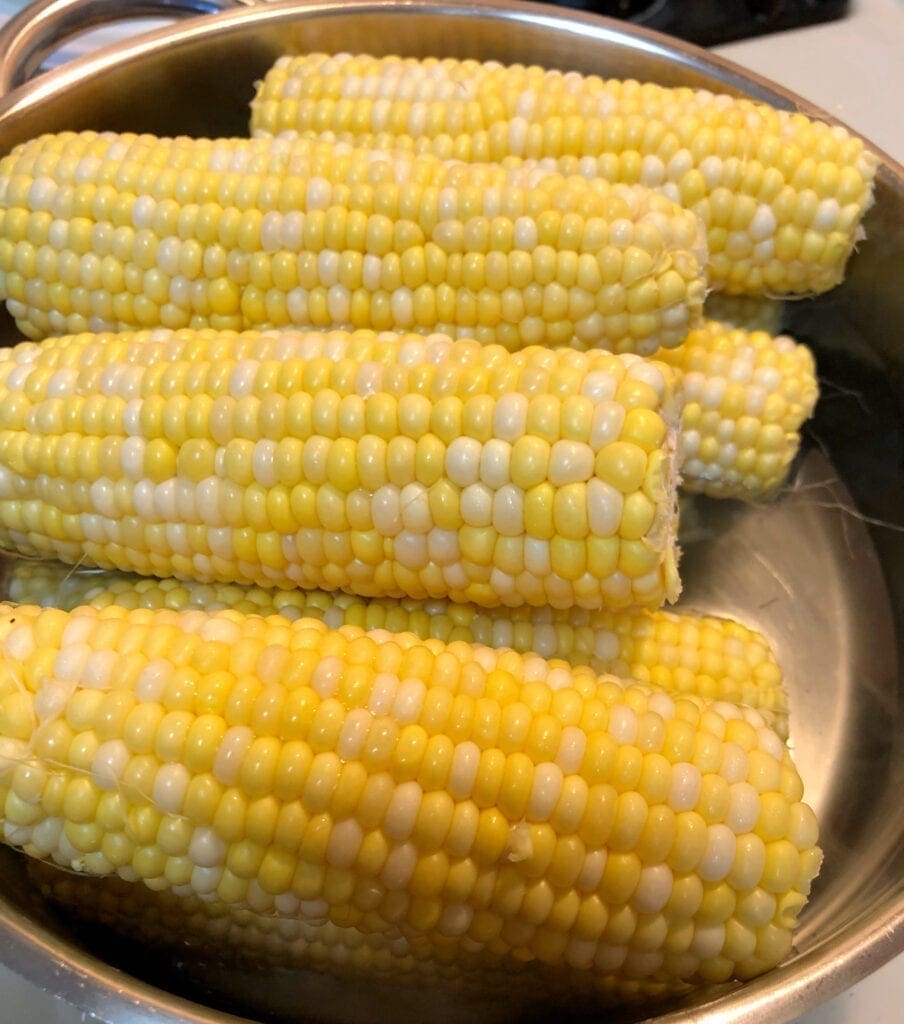
Serving the Corn
I enjoy my sweet corn easy to bit into. My father-in-law taught me how to put a little butter on the side of your plate. That way you can put the butter on the corn just before you bite into it. So much nicer than having the butter run off the corn. Yum!
My husband likes to cut his corn off the cob. On a plate, he holds the cob at the top, straight up and uses a pairing knife to cut down the corn cob.
While I enjoy my corn simply with butter, salt, and sometimes a little pepper; other people like to add some of these toppings.
- Parmesan cheese
- Hot sauce
- Dried herbs
- Fresh herbs, such as dill, or oregano
My daughter likes to use a corn holder skewer on the ends of her ears. This keeps her hands clean. We have had this set for years. They are very nice when the corn is really a bit too hot to hold, but not too hot to start nibbling.
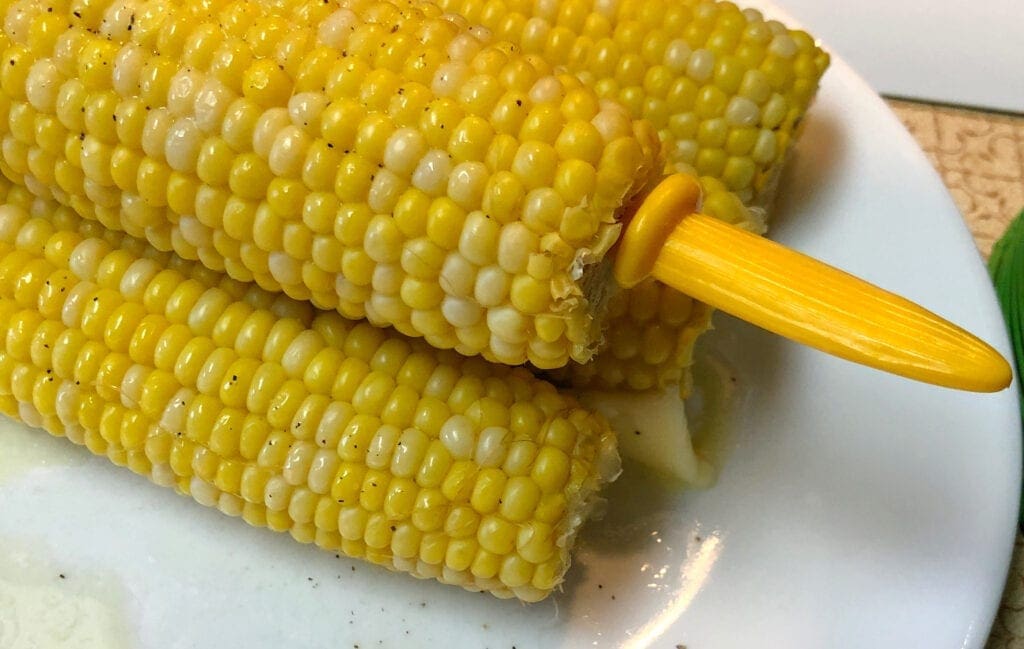
Boiled Corn on the Cob
As an Amazon Associate I earn from qualifying purchases.
Kitchen Essentials
Ingredients
- 6 Cobs Sweet Corn Cleaned
- 3 Tablespoons Sugar optional
- Water
text ingredients
Instructions
- Start by preparing the corn. Remove the husks and silk from each ear of corn, making sure to discard any damaged or discolored kernels.
- Fill a large pot with enough water to fully submerge the corn. Add a pinch of salt if desired, as it can enhance the flavor of the corn.
- Place the pot on the stove over high heat and bring the water to a rolling boil.
- Once the water is boiling, carefully add the prepared ears of corn to the pot. Make sure they are fully submerged.
- Reduce the heat to medium and let the corn simmer for about 10-15 minutes, or until the kernels are tender when pierced with a fork. Cooking times may vary depending on the freshness and size of the corn, so keep an eye on it.
- Once the corn is cooked, carefully remove the ears from the pot using tongs or a slotted spoon. Allow them to drain briefly before serving.
- Serve the boiled corn on the cob while it’s still hot. Place each ear on a plate and add a pat of butter on top. You can also season with additional salt or other spices according to your preference.
- Enjoy your delicious homemade corn on the cob!
Your Own Private Notes
Video
Nutrition
A few of my favorite things
The Power of Positivity
If you loved this post, please share. It helps to show me that these types of posts are helpful – thank you!
I hope that you liked this recipe. If you are looking for more ideas on what to make, here are a few other recipes that you may enjoy.

You can find Victoria crocheting, quilting, and creating recipes. She has cooked in restaurants for over 20 years, including many larger parties. She learned to crochet when she was just 11 years old and has been crocheting ever since; over 50 years now. Over 40 years ago, she loved her first class in sewing and continues to hone her skills in quilting. Many have enjoyed the handmade gifts over the years. In her professional career, she has worked in management in a wide variety of businesses including higher education as a dean of a division. All the while attending college part-time to achieve her doctorate in higher education with an emphasis in e-learning.



